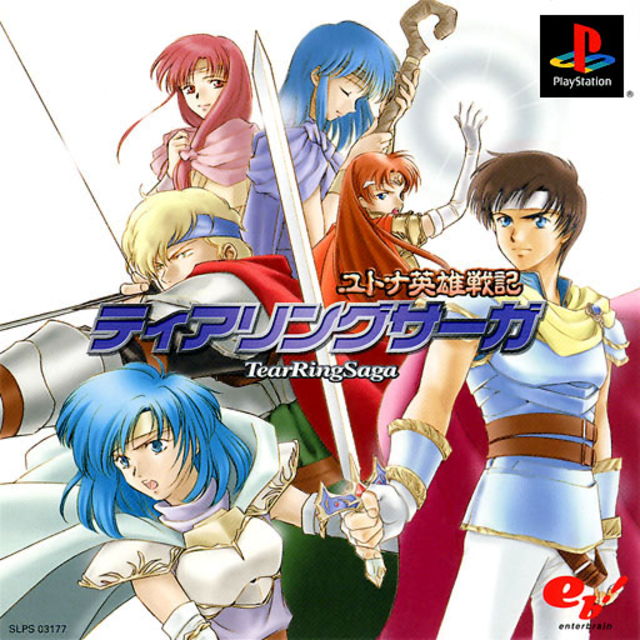An unabashed yet delightfully odd Fire Emblem clone.
To most Fire Emblem fans, Tear Ring Saga is nothing more than a Playstation game that heavily borrows from Fire Emblem games before it. To be fair, there is reason why this attitude still persists: partly, it is because the game has yet to be translated, leaving players with little incentive to pick it up, yet a larger part is because this is completely true. Tear Ring Saga borrows a lot from Fire Emblem, from story and gameplay elements to minor sound effects. However, this by no means makes the game bad; in fact, the elements it takes from Fire Emblem, along with the various ways it plays and toys around with these various elements, makes Tear Ring Saga an incredibly enjoyable experience.
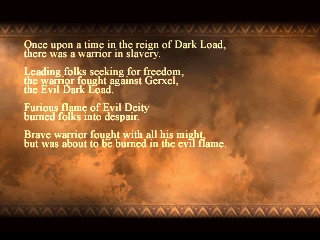
Much of its quality derives from things relating to the story, although oddly not the story itself. The plot itself is largely young prince Runan’s confusing political romp through the continent of Liberia. While it presents decent themes and develops them well (the corruption of the upper class being a favorite), the story itself presents a heavy amount to take in the form of political ties from country to country. True, these elements come together in a satisfying conclusion, but the thick narrative may be too much investment for many players to see it through. The dialogue certainly does not help matters. Much of the time, it comes across as incredibly expository, certainly to a fault.
Yet dialogue aside, Tear Ring Saga does an amazing job of telling its story. The game uses every possible tool at its display, battles in particular. At several key points, the plot will unfold in very well choreographed set pieces, such as a fight between veteran swordsmen Shigen and Vega, or Julia learning sword techniques from her trainer/father. When combined with the already fantastic, high detail graphics (especially anything relating to battle), viewing the story becomes a more pleasant experience than the story itself. Yet even outside specific battle screens, the game still looks outstanding; the map animations can be equally satisfying in their own way, something that is especially evident with the more complex spells in the game.
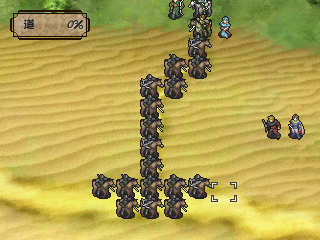
Though even without the graphics driving them, the battles can still be very rewarding. This is especially necessary, given that the game is nothing but battles. (There is a branching overworld, but there is not a lot to it outside occasional skirmishes and whatever the campaign offers.) You often finish one battle only to start another. However, this is not to imply that the battles are easy. A lot of the battles can be very challenging, testing the limits of your army as the game throws powerful troops at you left and right. Making things even more difficult are the frequent blank level ups in which no progress is made. Sometimes, it will even eliminate your only advantages, such as abilities or mounts, boiling affairs down to as much strategy as possible. It may seem as though the game revels in making the player suffer, but it is difficult thinking of more rewarding experiences than conquering the more difficult chapters in the game.
On the other hand, Tear Ring Saga has its share of easy maps. One map consists of nothing but three recruitable characters and a few shops. In fact, most of Tear Ring Saga’s appeal lies in how strangely it handles many of its own gameplay mechanics. This is most evident in its class system, which mixes and matches concepts in strange ways. Priestesses can take off their clothes and dance for their allies; armored tanks (in a medieval setting) can become stationary ballistae on a whim; and a certain horse-mounted paladin can gain a dragon as part of a story event. Much of the time, these are some of the best motivations for getting through the game: simply to see what strange combinations the game can cobble together.
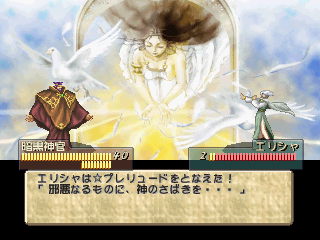
This applies to abilities as well as it does to classes. Any character can have any ability they wish, even if it is of no use to them. Yet much of the time, these abilities are of great use, turning otherwise passable characters into nigh unstoppable warriors on the battlefield. It is also not entirely uncommon to see critical rates past 50%, guaranteeing obscene amounts of damage, sometimes over 100 points of damage. (No enemy in the game has over 80 HP.) Yet even without abilities, characters can still be absolute powerhouses. Despite blank level ups being common, many characters become capable of dealing serious damage. In fact, one of the better characters in the game is an archer who, for story reasons, cannot kill any unit; she will simply bring them to within an inch of their life and intentionally miss her shots from there. She can serve an important role in many battle strategies, something that a powerful army will not immediately eliminate. Many things about Tear Ring Saga do not logically add up, which is exactly what makes it so enjoyable in the first place.
Unfortunately, this strangeness also manifests itself in less positive ways, clunky mechanics being the most obvious. Menu navigation is slightly at fault, although much of it lies in interacting with the maps. Several useful features aside (mid-map saves, expansive character bios, placing flags, etc.), it leaves a lot to be desired. The most glaring omission is actually making plans before battle. While it is possible to decide where your units start, doing so requires actually starting the battle. This means that an effective battle plan necessitates arranging characters via menus and loading a previous save should they not be deployed to your liking. When you finally get to the map, though, issues like this still plague the game. The controls can stick from time to time; turns must always be ended manually, even if there is absolutely nothing left to do on that turn; and instead of a uniform level cap, each character has a unique cap.
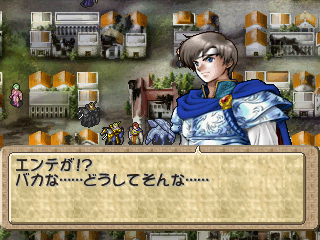
Though this is not to say everything about the tale is bad. For instance, Tear Ring Saga introduces a wide array of memorable characters over the course of the game. Despite introducing dozens of characters in its story (so many that one playthrough is not enough to meet them all), many of them get their due development. A lot of the backstories present are of the tragic variety, such as a character you can choose to sell into slavery, but Tear Ring Saga maintains an emotional balance throughout. Some portions are touching and hard hitting, while others are humorous and light-hearted. A lot of the latter comes from Holmes, a sort of gaiden protagonist to Runan. Holmes is foul-mouthed, cynical, coarse, and acts as the perfect foil to Runan’s more dramatic adventure, providing some amusing interplay when the story becomes especially heated.
In fact, this contrast between protagonists serves as the perfect synecdoche for Tear Ring Saga. On its surface, the game displays the persona of a serious strategy game with a grand political tale, and in several ways, it is successful at being that. The strategy aspect is solid, and the political aspects lead to some amazing things for those with the patience to put up with it. Yet past this appearance lie several fun toying around with its own mechanics and concepts. Characters can perform many dangerous acrobatic feats in the midst of battle; new rules can seemingly be invented at the drop of a hat, and abandoned just as quickly; even the characters in this story treat the events with a relaxed, carefree attitude not to be expected of the situation. For fans of the Fire Emblem series on which this is so clearly based, or just strategy RPGs in
